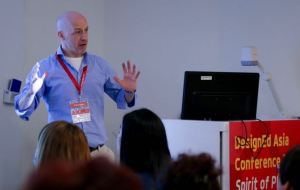I have previously written about NCTLs new recruitment process for educating and training new teachers: Zugzwang first move dilema.
This week NCTL have announced the detail for new ITT recruitment controls – the system that ‘empowers’ providers to recruit ‘as many trainees as they feel they need’ – followed by the biggest ‘BUT’:
BUT – you can’t recruit as many as you wish if you are an HEI, SCITT or School Direct.
BUT – you can’t recruit as many as want in particular subject.
BUT – you can’t recruit as many as want in a particular region.
BUT – you can’t recruit as many as you want in subjects you don’t already offer (HEIs).
BUT – you can’t recruit as many as you want in a particular phase.
Why – because NCTL will apply controls related to:
- Subject
- Route
- By Organisation
- By Region
What this system does reward is the quickest recruiter and this will definitely change the behaviour of providers and applicants as rejection of an applicant now has a double whammy effect.
Why – well here is an example:
Imagine 6 places have been allocated for training (I prefer educating and training) – previously these would have been allocated on the basis of a series of measures such as quality (whilst acknowledging there were problems with this method as well). Therefore you might have had the following allocation:
- Provider A (Outstanding provision) – 3 places
- Provider B (Good provision) – 2 places
- Provider C (Good provision, just come out of RI) – 1 place
Under the previous system the provider knew their allocation and made decisions based upon experience about when to recruit and how they should recruit. Their destiny was in their own hands and applicants would also know how many places were available at a particular institution.
Now under the new system in this example there are six weak applicants and because of the new system applicants apply for up to 3 providers. Each is therefore interviewed.
Previously the 6 weak applicants would have been rejected by Providers A and B. And even though provider C in the previous system may have accepted them – provider C could only have accepted 1 applicant.
However here is the new dilemma of the new system – if Provider A and Provider B reject all six applicants – they are not only rejecting the applicant whilst maintaining their own quality – they are also reducing the pool of places they can fill from. In this scenario if provider C accepts all applicants – provider A and B will not be able to recruit. So providers A and B are not only rejecting a candidate they also have the double whammy of reducing the pool that they recruit from.
Now of course there are many other scenarios and whilst this is a simplified explanation – the reality is this is not a model that rewards diligence in recruitment – it rewards speed in processing applicants. Dither and the pool of places available to you gets smaller. Likewise we know this won’t happen in all subjects and phases but it will happen.
When I asked NCTL the question ‘does this model in anyway encourage quality’ – the straightforward answer was ‘No’.
As a result we are moving away from training the ‘best generation of teachers’ to rewarding the ‘fastest generation’ of applications and the processing of these applications. I am sure it will be reassuring for parents to know that their child is not being taught by the best applicant educated at the best provider – but by the quickest applicants and providers who could fill the quickest.
NCTL have stressed this is a pilot for one year which confirms this is a desperate attempt to recruit teachers. If so lets all work together on this and come up with solutions rather than trying to manipulate a pseudo market with unknown controls.
Ultimately, this is not about empowering providers – it is unfortunate way of treating high quality providers and applicants, paying £9000, who may also be denied their choice of the way they wish to be educated in becoming a teacher.
